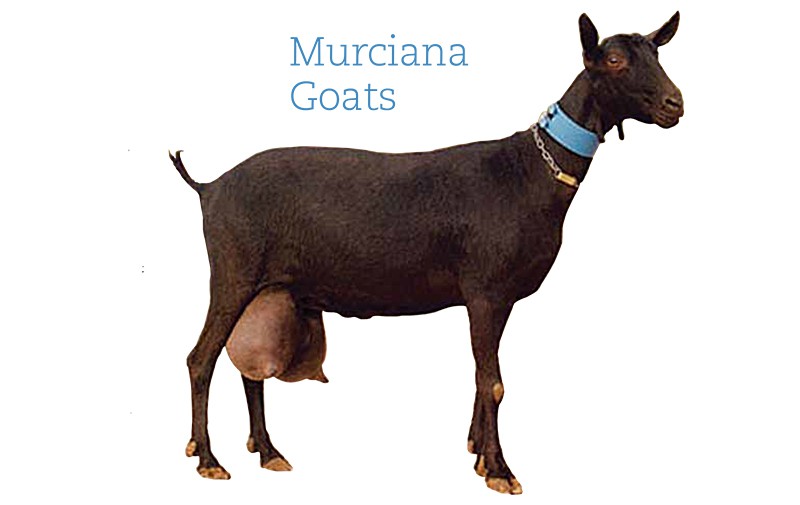
Origin
The Murciana is an elegant yet rugged Spanish breed of goat known for its ability to convert forage from the barren Mediterranean steppes into rich, delicious milk perfectly suited to cheese production. Native to the Murcia province in southeastern Spain, the Murciana has spent centuries grazing the hot, dry pastures of this arid region. Through careful selection, local shepherds (with the help of the Spanish Ministry of Agriculture) shaped the breed into the ultimate lowmaintenance grazing machine. Murcianas have excellent migrating abilities and will happily travel long distances in search of every type of food, from wild herbs and native grasses to agricultural by-products.
Migration
In the 1920s, display advertisements for the “Royal Murciana” in The Goat World periodical heralded the first import of the breed to the United States. An expert at the time, Dr. C. P. Delangle wrote of the breed’s ad: “The only Royalty attached to it is in the fancy of its admirers, but, let it be said, that the true Murcien goat is one, if not, the handsomest goat known.” Though the breed’s popularity in the U.S. waned in subsequent decades apparently due to difficult import regulations, Mrs. Eula Fay Frey, the founder of the popular American La Mancha breed, thought enough of the Murcianas’ qualities to select a bright red Nubian-Murciana buck named Christopher as one of the foundation sires for her fledgling breeding operation.
Appearance
Murcianas are sleek and medium-bodied with short ears and a small, erect tail. Their fine, mahogany to dark-colored coat and large, well-implanted udders make them impressive dairy goat specimens.
Milk
Along with its tough and adaptable nature, the Murciana is a quality dairy producer, noted for giving fine-flavored milk, rich in butterfat. With just one milking session per day and one kid delivered per year, Murcianas can produce about 600 kilograms (1,320 pounds) of milk per lactation cycle. While these numbers are not as impressive as those of their American relative, the La Mancha (about 1,700 pounds of milk per lactation), the Murciana is still the best milk-producing goat in Spain and one of that country’s most popular breeds.
Cheese
With an average of 5.3 percent fat content and 3.4 percent protein, the Murciana’s milk is well suited to cheesemaking and is used in a variety of signature Spanish cheeses, including the popular Murcia al Vino or “Drunken Goat.” This mild, creamy cheese is soaked in a local Spanish wine for 72 hours before aging. The result is an excellent snacking cheese with a striking violet-colored rind and a delicious tangy-sweet finish.




